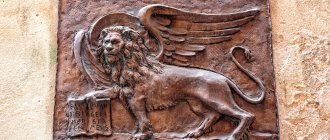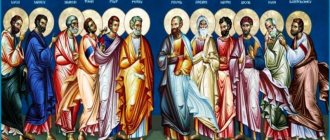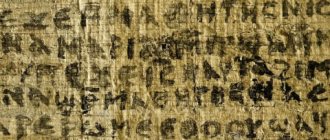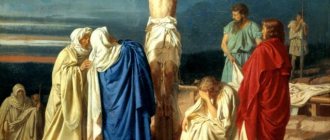The language of the New Testament.
The texts of the New Testament were written in the common language of the eastern Mediterranean - KOINE Greek. Later, the texts of the New Testament were translated from Greek into Latin, Syriac and Aramaic. In the II-III centuries. It was believed among early textual scholars that the Gospel of Matthew was written in Aramaic and the Epistle to the Hebrews in Hebrew, but this view has not been confirmed. There is a small group of modern scholars who believe that the texts of the New Testament were originally written in Aramaic and then translated into Koine, but many textual studies say otherwise.
When were the Gospels of Matthew, Mark, Luke, John written - is there an exact date?
Thanks for the question. For many people, the question of when the Gospel was written seems unimportant until the question of the accuracy of the Gospel is raised. If we were to assume that the Gospel of Mark was written in 70 AD, that would mean that Mark waited 40 years after the events to begin writing. Although 40 years is not that long. Don't forget that the Vietnam War ended over 40 years ago, and veterans of that war are still alive and telling stories about that time.
The problem is this: it is difficult to show that Mark was an eyewitness to those events. He is certainly not one of the apostles and his name is nowhere to be found in the Gospel. Some scholars have suggested that the young man who ran away naked in Mark 14:51-52 was Mark himself, but there is insufficient evidence for this. Scholars who hold this view believe so based on the fact that the naked youth did not seem to refer to the story itself, but was included to show that the author was there. In addition, Mark lived in Jerusalem (see Acts 12:12) and according to church tradition, Jesus and His apostles held the Passover Seder (last supper) in Mark's house [1].
But, as I said, the evidence that Mark included himself in the Gospel as the naked young man who ran away is quite weak. It is reasonable to conclude that Mark was not an eyewitness to the life, death, and resurrection of Jesus Christ. But we learn a very interesting thing about him from several quotes from some of the early Church Fathers:
“Becoming Peter’s translator, Mark wrote down exactly everything he remembered. Although, he did not set out the words and deeds of Christ in the exact order. Because he did not hear the Lord and did not accompany Him. But, as I said, he subsequently accompanied Peter. Peter presented the doctrine according to the needs of [his hearers], but he had no intention of giving a consistent account of the Lord's words. Therefore, Mark did not make any mistake when he thus wrote down some things as he remembered them. On the one hand, he took special care not to leave out anything he heard, and at the same time not to insert anything fictitious.” – Papias, as quoted by Eusebius.
“After their death, Mark, Peter’s disciple and translator, also conveyed to us in writing what Peter preached.” - Irenaeus.
“Mark, the translator and follower of Peter, begins the Gospel in this way.” - Irenaeus.
“Mark was a follower of Peter. Peter publicly preached the Good News in Rome before Caesar's mounted knights, and presented many testimonies about Christ. In order that they might thereby remember what Peter said, Mark wrote in its entirety what is called the Gospel of Mark.” - Clement of Alexandria.
“Such a ray of piety shone upon the minds of Peter's hearers, that they were not satisfied with merely hearing or the unwritten teaching of the divine word. Thus, with all sorts of requests, they besought Mark, to whom the Gospel is attributed (and he was Peter's companion), to leave in writing a record of the teaching which he had received orally. And they didn't leave him alone until they got their way. And thus we owe to them the sacred book called “The Gospel of Mark.” Having learned what had been done, through the revelation of the Spirit, it is said that the apostle was delighted with the enthusiasm of these people and approved the work to be read in the churches, Clement relates in the sixth book of the Stromates.” – Eusebius, quoting Clement of Alexandria (c. 195, E), 2.579.
Thus, Mark may not have been an eyewitness to the life, death, and resurrection of Jesus, but Peter certainly was. Peter was the chief disciple and the one to whom Jesus appeared in person after His death (see Luke 24:34 and 1 Corinthians 15:5; Simon and Cephas are two other names of Peter). Thus, Peter was the eyewitness that Mark needed to tell his story. It is interesting to note that Luke begins his Gospel by mentioning that many people made up accounts of Jesus' life based on eyewitness accounts (see Luke 1:1-4).
So the problem of where Mark got the information is cleared up. But what about the fact that the Gospel of Mark was written so late? If the Gospel of Mark was written in 70 AD. BC, and the other gospels were written later, then doesn't that mean that these other gospels (containing more information) were written too late to be written by eyewitnesses?
To do this, we need to examine the argument why scholars think the first Gospel was written in 70 AD. Historians are absolutely sure that in 70 AD. e. The Jewish temple was destroyed during the fall of Jerusalem. Interestingly, this event was predicted in Mark 13:2, Matthew 24:2 and Luke 21:6. Here's how Luke talks about this prediction:
“Some of the disciples talked about how the temple was decorated with beautiful stones and deposits dedicated to God. But Jesus Christ said: the days will come in which, from what you see here, there will not be left one stone upon another; everything will be destroyed.”
It is very interesting that Jesus made a prediction of something that has historically been proven to come true. This, of course, can serve as historical evidence that Jesus was in fact God. Although, to explain this phenomenon without recognizing the divinity of Jesus, skeptical scientists are forced to conclude that Jesus never predicted this. Instead, Mark, Matthew, and Luke all lived in the time after the destruction of the temple, and they put this prediction into the mouth of Jesus Christ. As Bishop John Robinson said in his book, Redating the New Testament:
“One of the strangest facts about the New Testament is that what in any account would seem to be the most dated and climactic event of this period is the fall of Jerusalem in 70 AD. e., and with it the collapse of institutional Judaism based on the temple - is never mentioned as a fact of the past. This is, of course, predicted; and these predictions, in some cases at least, are supposed to have been written (or detailed) after the event.”
The problem is that this assumption is based on the premise that Jesus is not God, and thus would be unable to predict the future, which is essentially the very thing that skeptical scientists need to prove. Therefore, this cannot be used as a premise to say that the Gospels were written that late. Arguing that the Gospels are unreliable accounts of the life of Jesus based on the fact that they are supposed to have been written late is nothing more than a circular argument. The logic is as follows:
- Premise 1: The Gospels cannot be trusted because they were written decades after the death of Jesus and are therefore legend-like.
- Premise 2: This is because three of the four Gospels mention that Jesus predicted an event (the destruction of the temple) that is known to have occurred 40 years after the supposed prediction.
- Premise 3: Jesus could not have predicted this because He is not God. Thus, the Gospels that contain this prediction were written after the event occurred.
- Conclusion: Therefore, the Gospels cannot be trusted because they were written several decades after the death of Jesus and therefore resemble a legend.
Canonization of the Books of the New Testament
The canonization of the New Testament lasted almost three centuries. The Church became concerned with the canonization of the New Testament in the middle of the 2nd century. There was a specific reason for this - it was necessary to resist the widespread Gnostic teachings. Moreover, there was no talk of canonization in the 1st century due to the constant persecution of Christian communities. Theological reflection begins around 150.
Let's define the main milestones of the canonization of the New Testament.
Canon Muratori
According to the Muratori canon dating back to the year 200, the New Testament did not include:
- Paul's Epistle to the Hebrews
- Both Epistles of Peter
- Third Epistle of John
- Epistle of James.
But the Apocalypse of Peter, which is now considered an apocrypha, was considered the canonical text.
By the end of the 3rd century, the Canon of the Gospels was adopted.
The books of the New Testament were canonized by the Christian Church at the Ecumenical Councils. Only two books from the New Testament were accepted into the canon, with some problems:
- Revelation of John the Theologian (due to the mystical nature of the narrative);
- One of the Epistles of the Apostle Paul (due to doubts about authorship)
The Church Council of 364 approved the New Testament in the amount of 26 books. The Apocalypse of John the Evangelist was not included in the canon.
The canon took shape in its final form in 367. Athanasius the Great in his 39th Easter Epistle lists 27 books of the New Testament.
It should certainly be mentioned that, in addition to certain theological characteristics of the texts included in the canon, the canonization of the New Testament was influenced by a geographical factor. Thus, the New Testament included writings that were kept in the churches of Greece and Asia Minor.
A large number of works of Christian literature of the 1st-2nd centuries. were considered apocryphal.
Manuscripts of the New Testament.
Interesting fact: the number of manuscripts of the New Testament is many times greater than that of any other ancient text. Compare: about 24 thousand handwritten texts of the New Testament are known and only 643 manuscripts of Homer’s Iliad, which ranks second in the number of manuscripts. It is also interesting that the time difference between the actual creation of the text and the date of the extant manuscript is very small (20 - 40 years) when we are talking about the New Testament. The earliest manuscripts of the New Testament date back to the year 66 - this is a fragment of the Gospel of Matthew. The oldest complete list of New Testament texts dates back to the 4th century.
Manuscripts of the New Testament are usually classified into 4 types:
Alexandrian type. It is considered the closest to the original. (Vatican Codex, Codex Sinaiticus, Bodmer Papyrus)
Western type. Voluminous texts, which are largely retellings of the Biblical texts of the New Testament. (Beza Code, Washington Code, Claremont Code)
Caesarea type. Something in common between the Alexandrian and Western types (Code Corideti)
Byzantine type. Characterized “ improved” style, the grammatical forms here are close to the classical language. This is already the result of the work of an editor or group of editors of the 4th century. Most of the New Testament manuscripts that have come down to us belong to this type. (Alexandrian Codex, Textus Receptus)
The essence of the New Testament.
The New Testament is a new agreement between God and people, the essence of which is that humanity was given the Divine Savior Jesus Christ, who founded a new religious teaching - Christianity. By following this teaching, a person can come to salvation in the Kingdom of Heaven.
The main idea of the new teaching is that you need to live not according to the flesh, but according to the spirit. The New Testament represents the relationship between God and man, according to which man is granted redemption from original sin through the death of Jesus Christ on the cross. Now a person living according to God’s covenant can achieve moral perfection and enter the Kingdom of Heaven.
If the Old Covenant was concluded exclusively between God and God's chosen Jewish people, then the proclamation of the New Covenant concerns all humanity. The Old Testament was expressed in the Ten Commandments and the moral and ritual decrees that accompanied them. The quintessence of the New Testament is expressed in the Sermon on the Mount, the commandments and parables of Jesus.
You can also take the New Testament knowledge test
Banned Gospels
If you follow the chronology of biblical events, then one of the first to follow is Fr. This book describes the birth, childhood and youth of the mother of Jesus Christ, Mary, until the birth of the Savior. This version of the Gospel contains many passages from other texts canonized by the church. Based on the title of this book, it is clear that Jacob, the son of Jesus’ father from his first marriage, claims to be its author. However, this version does not stand up to criticism, since the writer was clearly unfamiliar with Jewish traditions. This is evidenced, for example, by the fact that, according to the text, three-year-old Mary was taken to the temple, where she lived until she was 12 years old.
Another scripture, the “Gospel of Childhood,” allegedly written by the Apostle Thomas, tells about the childhood of Jesus himself. In this text, little Jesus appears to the reader as a kind of superman, and not always kind. It can purify water, or it can also “dry up” a child who tries to stir up the purified pond again. And adults who complain about Christ's tricks suddenly go blind. However, according to scientists, Thomas cannot be considered the author of this Gospel, since according to some details of the narrative one can easily conclude that the writer does not have the slightest idea about the life of the Jews.
In addition to these two apocrypha, the Gospels of Peter, Mary, Philip and Barnabas, the Gospels of Eve, Nicodemus and Judas, the Gospel of the Egyptians, the Gospel of the Twelve, the Gospel of the Hebrews and other works are also known.










